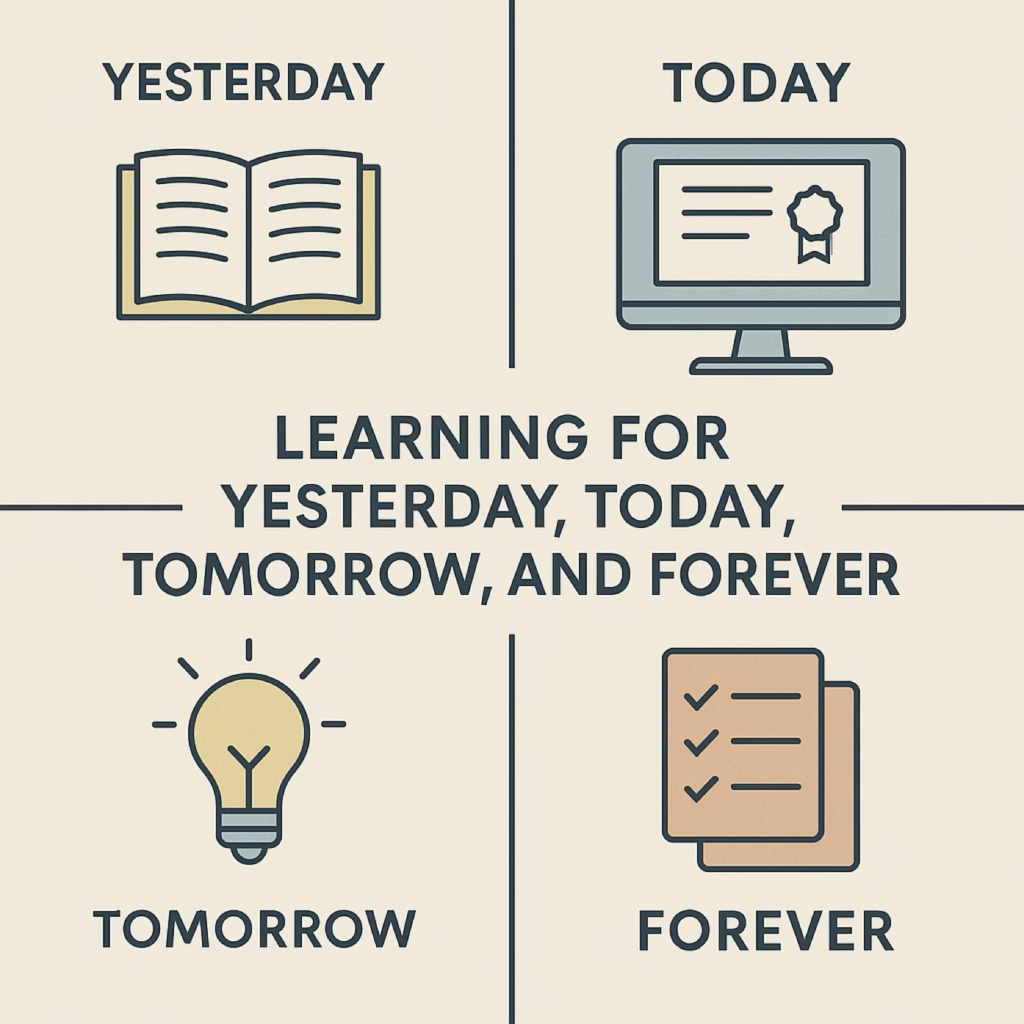
In education, we often wrestle with a vital question: What exactly should students be learning? The answer is more complex than any single curriculum map or graduation requirement. It requires balance—an intentional blend of the lessons from the past, the realities of the present, the innovations of the future, and the enduring human capacities that will serve students for a lifetime.
Too often, our systems lean heavily toward yesterday. We want students to read the same books we once read, memorize facts we once memorized, and master the topics that shaped our own schooling. There’s great value in historical knowledge, classic literature, and foundational skills. But when education becomes an exercise in nostalgia, we risk making learning more about our past than their future.
In the now, we attempt to make learning relevant. We use today’s technology to engage students. We align instruction to the requirements of current job markets, offering pathways to certifications and technical skills. This is important. It recognizes students’ needs in the present and helps them see school as meaningful. But today is fleeting—and building an education system solely around current trends leaves students underprepared for what’s next.
Looking toward tomorrow, we stretch to teach futuristic thinking. We introduce students to emerging technologies, encourage innovation, and discuss global issues like climate change and racial equity. These are critical conversations. They inspire students to be thoughtful citizens and problem solvers. Yet even this approach can fall short. Why? Because it’s still anchored in a linear idea of progress, assuming we can predict what the future will need.
But the real question isn’t just about yesterday, today, or tomorrow. It’s about forever.
What do students need not just to survive in a changing world—but to thrive in one we can’t yet imagine? The answer lies in timeless human skills: thinking, listening, problem-solving, and communicating. These are the capacities that transcend content, tools, and timelines. They prepare students for a world where change is the only constant.
That’s why we must create space for challenging, creative projects—work that doesn’t just test knowledge but builds capability. Projects where students take risks, collaborate with others, and face authentic challenges. Where there may be more than one solution—or none yet imagined. These experiences develop resilience, adaptability, and curiosity. They empower learners to navigate uncertainty with confidence.
Our responsibility as educators is not to load students with our knowledge of the past. It’s to equip them with the human skills that will carry them into a future we cannot see. Let’s balance the best of yesterday, make use of today’s tools, look ahead to tomorrow—but, most importantly, prepare students for forever.
